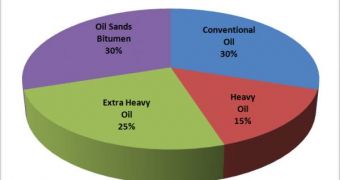Denmark has in its coastal waters a fairly significant amount of oil, but the shape, location, and formation method of the deposits have been anyone's guess until recently. A team of researchers from the University of Copenhagen has come up with an explanation of how the oil is placed under the ocean floor, and, most importantly, why. The find could have considerable consequences, including creating new drilling techniques that could significantly increase oil production and exploitation efficiency in the areas off the country's coasts.
The experts, based at the university's Institute of Chemistry, used atomic force microscopes to investigate core drill samples harvested from the North Sea, and determined that the traits of the rocks surrounding the deposits were very different than geologists would have expected from rocks of this type. In a study published this week in the journal Proceedings of the National Academy of Sciences (PNAS), Assistant Professor Tue Hassenkam, the leader of the research team, reveals the fact that the oil located in the Danish part of the North Sea is primarily made up of chalk.
“Previous investigations were carried out on the surface properties of pure mineral crystals. But our investigation has shown that this chalk has a different and more complex structure,” the expert says. He adds that the oil is basically trapped in a sponge-like structure, in that tiny pores in the chalk hold the precious molecules. This means that conventional drilling techniques, in which water is injected in the boreholes and the extra pressure forces the oil out, would have only limited results, and would only bring to the surface a fairly small portion of the total deposit.
Regularly, geologists hold, chalk – made out almost entirely of mineral calcite – repels oil, but these layers of the stuff are covered with another material, which the fossil fuel can adhere to. Hassenkam explains that the only way researchers could determine the structure of the bizarre material was to investigate how the chalk was formed. “Chalk is actually the casings of ancient algae. The algae gave their cases a type of 'surface coating' to make them resistant to water. And it is probably this surface coating that we can see in action here, even 60 million years later,” he shares.

 14 DAY TRIAL //
14 DAY TRIAL //